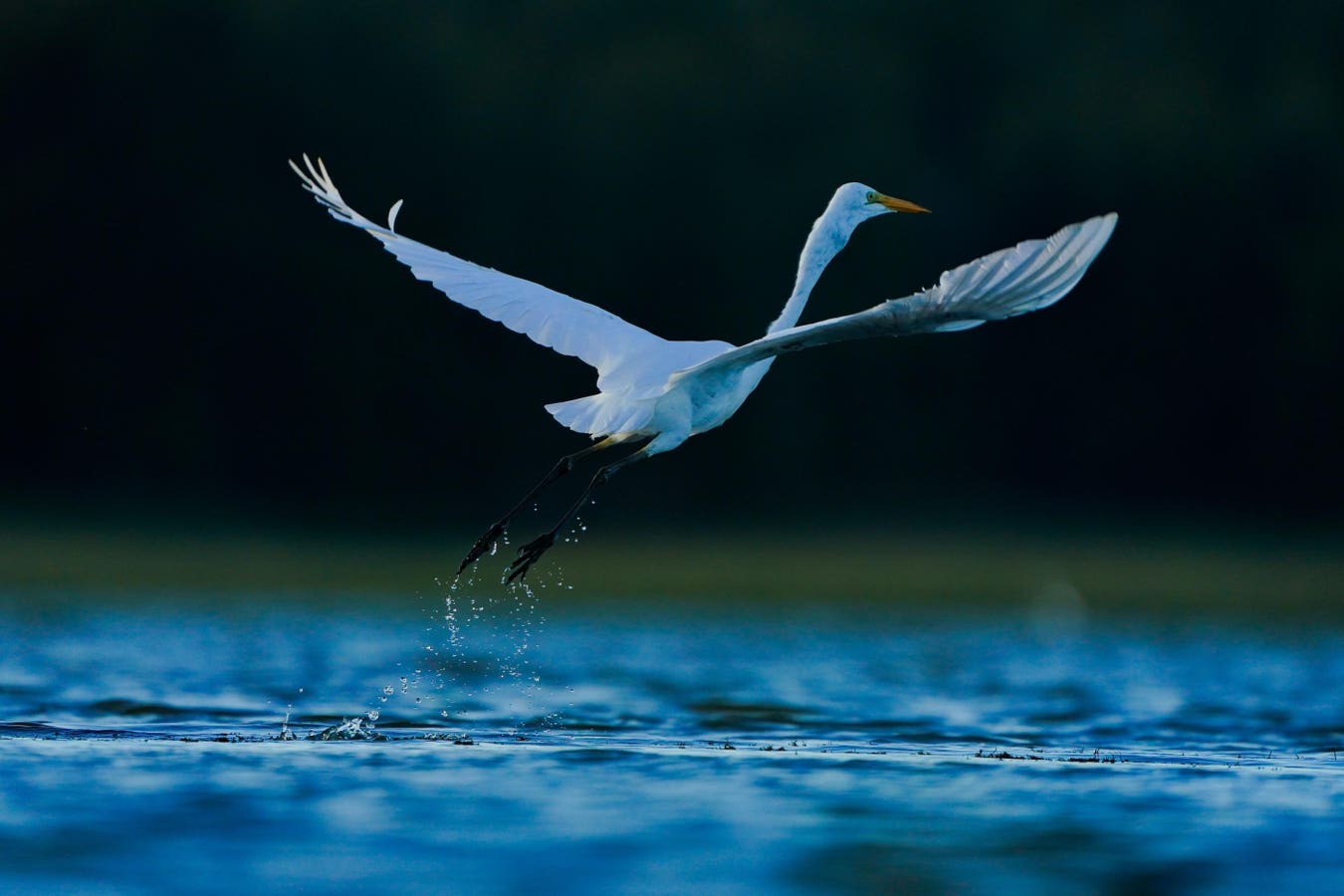An egret flying from the lake in Anuradhapura, Sri Lanka, on September 23, 2023. Researchers report … More
In a bid to get ahead of the next global flu pandemic, scientists have turned to a surprising tool: bird poop. In remote parts of the Indian Ocean and Oceania — regions often neglected during global disease surveillance — researchers are using droppings from wild birds to map the spread of avian influenza viruses with pandemic potential.
A new study published in Nature Communications analyzed more than 27,000 guano samples from countries including Somalia, the Maldives, Sri Lanka, Madagascar, Indonesia, and Papua New Guinea. The findings reveal widespread circulation of highly pathogenic influenza strains, particularly H5N1, in areas where human and wildlife health infrastructure is limited. More than 99% of the detected H5 viruses carried genetic markers linked to high virulence. The early detection of viral RNA in wild bird droppings, sometimes preceding official poultry outbreaks, suggests that unconventional surveillance in these biologically rich but infrastructurally sparse areas could play a larger role in pandemic risk mitigation. For agriculture, biosecurity, and pharmaceutical preparedness, guano-based monitoring could expand where meaningful early warning may be possible, particularly where current systems fall short.
Guano-based monitoring offers several advantages. It’s non-invasive, doesn’t require handling or trapping birds, and can be deployed in both ecologically sensitive areas and regions where traditional surveillance is difficult. Fresh droppings often contain viral RNA, enabling researchers to recover full genomes and assess the pathogenic potential of circulating strains. Whether in remote island roosts or along migratory corridors near commercial farms, bird droppings may offer a scalable substrate for global influenza surveillance.
The data reveal a pattern of geographically extensive viral circulation. Of the more than 27,000 guano samples analyzed, just over 1% tested positive for avian influenza RNA. H5N1, the same subtype now circulating among wild birds and mammals in the Americas and affecting dairy herds and poultry operations in the United States, was the most frequently detected strain. It was especially common in samples from islands in Sri Lanka and the Maldives, where it accounted for up to 85.7% of detections. Among the H5-positive samples, the vast majority carried polybasic cleavage site motifs, molecular features associated with high virulence and the capacity for systemic infection in birds. H5N1 sequences collected from bird droppings in Somalia’s Bajuni Islands, Yemen’s Socotra Archipelago, and the Maldivian island of Maakandoodhoo carried the H275Y mutation in the neuraminidase gene, a genetic change that is associated with reduced effectiveness of oseltamivir, one of the limited antiviral options currently used to treat severe influenza infections.
Relative frequencies of highly pathogenic and low pathogenicity subtypes among avian influenza … More
Data from Tanguingui Island in the Philippines suggest that H5N2 virus was present in wild birds as early as two years before the country’s first confirmed outbreak in backyard ducks in November 2024, suggesting that there is an important role for guano-based sampling in complementing existing surveillance systems, offering a path toward more anticipatory One Health approaches to protecting both human and animal health.
Influenza viruses in wild birds pose a well-documented risk to human health, poultry production, and even conservation. As deforestation, mining, and displacement drive people into once-remote ecosystems, the risk of spillover is growing, the authors suggest. Governments, poultry producers, pharmaceutical developers, and global health agencies might take note: guano-based surveillance offers a practical tool for identifying emerging threats before they escalate into outbreaks.
Monitoring bird droppings may not sound high-tech, but it could help stop the next pandemic before it begins.









